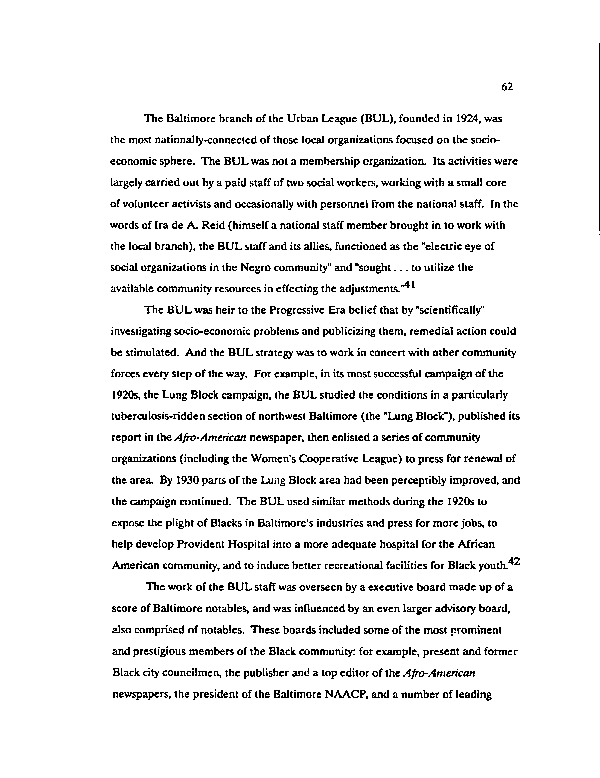|
62
The Baltimore branch of the Urban League (BUL), founded in 1924, was
the most nationally-connected of those local organizations focused on the socio-
economic sphere. The BUL was not a membership organization. Its activities were
largely carried out by a paid staff of two social workers, working with a small core
of volunteer activists and occasionally with personnel from the national staff. In the
words of Ira de A. Reid (himself a national staff member brought in to work with
the local branch), the BUL staff and its allies, functioned as the "electric eye of
social organizations in the Negro community" and "sought... to utilize the
available community resources in effecting the adjustments. *
The BUL was heir to the Progressive Era belief that by "scientifically"
investigating socio-economic problems and publicizing them, remedial action could
be stimulated. And the BUL strategy was to work in concert with other community
forces every step of the way. For example, in its most successful campaign of the
1920s, the Lung Block campaign, the BUL studied the conditions in a particularly
tuberculosis-ridden section of northwest Baltimore (the "Lung Block"), published its
report in the Afro-American newspaper, then enlisted a series of community
organizations (including the Women's Cooperative League) to press for renewal of
the area. By 1930 parts of the Lung Block area had been perceptibly improved, and
the campaign continued. The BUL used similar methods during the 1920s to
expose the plight of Blacks in Baltimore's industries and press for more jobs, to
help develop Provident Hospital into a more adequate hospital for the African
American community, and to induce better recreational facilities for Black youth.
The work of the BUL staff was overseen by a executive board made up of a
score of Baltimore notables, and was influenced by an even larger advisory board,
also comprised of notables. These boards included some of the most prominent
and prestigious members of the Black community: for example, present and former
Black city councilmen, the publisher and a top editor of the Afro-American
newspapers, the president of the Baltimore NAACP, and a number of leading
|

